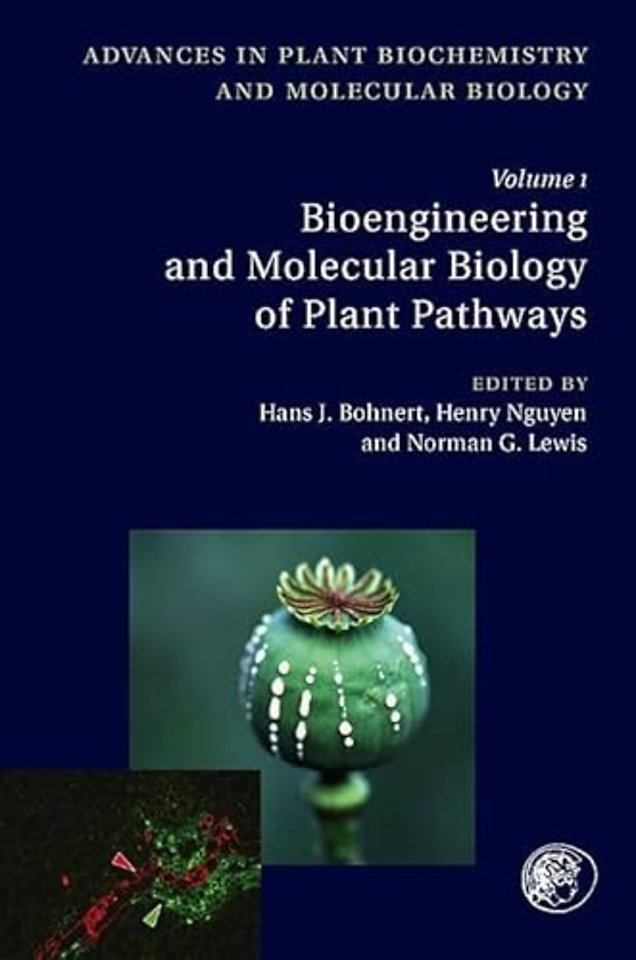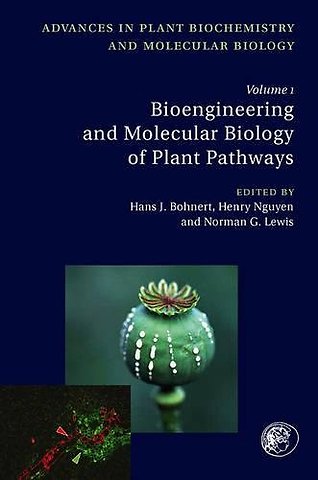<p>Dedication</p> <p>Contributors to Volume 1</p> <p>Introduction to the Series and Acknowledgements</p> <p>Preface to volume 1</p> <p>Prologue</p> <p>Metabolic Organization in Plants: A Challenge for the Metabolic Engineer</p> <p>1 Introduction</p> <p>2 Plant Metabolic Networks and Their Organization</p> <p>3 Tools for Analyzing Network Structure and Performance</p> <p>4 Integration of Plant Metabolism</p> <p>5 Summary</p> <p>Enzyme Engineering</p> <p>1 Introduction</p> <p>2 Theoretical Considerations</p> <p>3 Practical Considerations for Engineering Enzymes</p> <p>4 Opportunities for Plant Improvement Through Engineered Enzymes and Proteins</p> <p>5 Summary</p> <p>Genetic Engineering of Amino Acid Metabolism in Plants</p> <p>1 Introduction</p> <p>2 Glutamine, Glutamate, Aspartate, and Asparagine are Central Regulators of Nitrogen Assimilation, Metabolism, and Transport</p> <p>3 The Aspartate Family Pathway that is Responsible for Synthesis of the Essential Amino Acids Lysine, Threonine, Methionine, and Isoleucine</p> <p>4 Regulation of Methionine Biosynthesis</p> <p>5 Engineering Amino Acid Metabolism to Improve the Nutritional Quality of Plants for Nonruminants and Ruminants</p> <p>6 Future Prospects</p> <p>7 Summary</p> <p>Engineering Photosynthetic Pathways</p> <p>1 Introduction</p> <p>2 Identification of Limiting Steps in the PCR Cycle</p> <p>3 Engineering CO2â€Fixation Enzymes</p> <p>4 Engineering Postâ€RuBisCO Reactions</p> <p>5 Summary</p> <p>Genetic Engineering of Seed Storage Proteins</p> <p>1 Introduction</p> <p>2 Storage Protein Modification for the Improvement of Seed Protein Quality</p> <p>3 Use of Seed Storage Proteins for Protein Quality Improvements in Nonseed Crops</p> <p>4 Modification of Grain Biophysical Properties</p> <p>5 Transgenic Modifications that Enhance the Utility of Seed Storage Proteins</p> <p>6 Summary and Future Prospects</p> <p>Biochemistry and Molecular Biology of Cellulose Biosynthesis in Plants: Prospects for Genetic Engineering</p> <p>1 Introduction</p> <p>2 The Many Forms of Celluloseâ€A Brief Introduction to the Structure and Different Crystalline Forms of Cellulose</p> <p>3 Biochemistry of Cellulose Biosynthesis in Plants</p> <p>4 Molecular Biology of Cellulose Biosynthesis in Plants</p> <p>5 Mechanism of Cellulose Synthesis</p> <p>6 Prospects for Genetic Engineering of Cellulose Biosynthesis in Plants</p> <p>7 Summary</p> <p>Metabolic Engineering of the Content and Fatty Acid Composition of Vegetable Oils</p> <p>1 Introduction</p> <p>2 TAG Synthesis</p> <p>3 Control of TAG Composition</p> <p>4 Summary</p> <p>Pathways for the Synthesis of Polyesters in Plants: Cutin, Suberin, and Polyhydroxyalkanoates</p> <p>1 Introduction</p> <p>2 Cutin and Suberin</p> <p>3 Polyhydroxyalkanoate</p> <p>Plant Sterol Methyltransferases: Phytosterolomic Analysis, Enzymology, and Bioengineering Strategies</p> <p>1 Introduction</p> <p>2 Pathways of Phytosterol Biosynthesis</p> <p>3 Phytosterolomics</p> <p>4 Enzymology and Evolution of the SMT</p> <p>5 Bioengineering Strategies for Generating Plants with Modified Sterol Compositions</p> <p>Engineering Plant Alkaloid Biosynthetic Pathways: Progress and Prospects</p> <p>1 Introduction</p> <p>2 Monoterpenoid Indole Alkaloids</p> <p>3 Tetrahydrobenzylisoquinoline Alkaloids</p> <p>4 Tropane Alkaloids</p> <p>5 Summary</p> <p>Engineering Formation of Medicinal Compounds in Cell Cultures</p> <p>1 Introduction</p> <p>2 Biochemistry and Cell Biology of Secondary Metabolites</p> <p>3 Cell Culture and Metabolite Production</p> <p>4 Beyond the Obstacles: Molecular Biological Approaches to Improve Productivity of Secondary Metabolites in Plant Cells</p> <p>5 Future Perspectives</p> <p>6 Summary</p> <p>Genetic Engineering for Salinity Stress Tolerance</p> <p>6 Plant Signal Transduction for Adaptation to Salinity</p> <p>7 ABA is a Major Mediator of Plant Stress Response Signaling</p> <p>8 Summary</p> <p>Metabolic Engineering of Plant Allyl/Propenyl Phenol and Lignin Pathways: Future Potential for Biofuels/Bioenergy, Polymer Intermediates, and Specialty Chemicals?</p> <p>1 Introduction</p> <p>2 Lignin Formation and Manipulation</p> <p>3 Current Sources/Markets for Specialty Allyl/Propenyl Phenols</p> <p>4 Biosynthesis of Allyl and Propenyl Phenols and Related Phenylpropanoid Moieties</p> <p>5 Potential for Allyl/Propenyl Phenols?</p> <p>6 Summary</p> <p>Author Index</p> <p>Subject Index</p>

